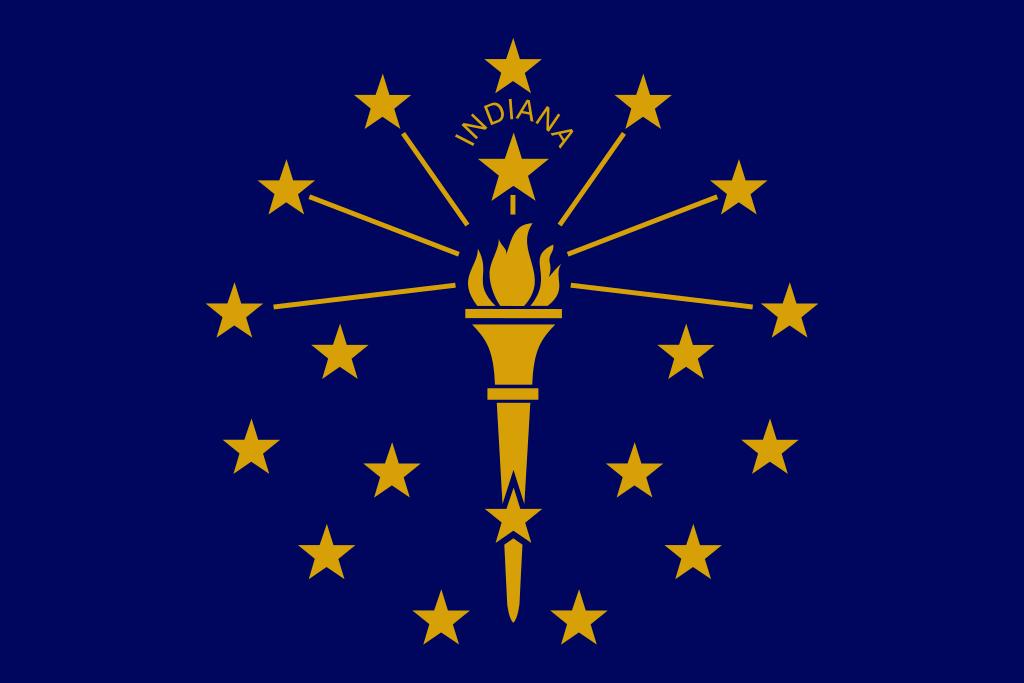Let’s Play Date, Marry, Kill…with Roundabouts.
What are your thoughts as Indiana starts adopting these modern traffic control measures (Europe has been doing them since…forever)?
Most people I talk to either love or hate these intersections. For some reason, I can’t find people who are indifferent to them very often.
According to the Carmel’s city webpage: “Carmel is internationally known for its roundabout network. Since the late 1990’s Carmel has been building and replacing signalized intersections with roundabouts. Carmel now has more than 150 roundabouts, more than any other city in the United States.”
“The number of injury accidents in Carmel have reduced by about 80 percent and the number of accidents overall by about 40 percent.”
General PROs / CONs
- Up to a 90 percent reduction in fatalities
- 76 percent reduction in injury crashes
- 30-40 percent reduction in pedestrian crashes
- Reduces the severity of crashes
- Keeps pedestrians safer
- Roundabouts reduce the number of potential accident points within an intersection, 75 percent fewer conflict points than four-way intersections
- No signal equipment to install and repair, savings estimated at an average of $5,000 per year in electricity and maintenance costs
- Service life of a roundabout is 25 years (vs. the 10-year service life of signal equipment)
- Reduces pollution and fuel use
- 30-50 percent increase in traffic capacity, improves traffic flow for intersections that handle a high number of left turns, reduces need for turn lanes
- While roundabouts can handle moderate to heavy traffic volumes more efficiently than traditional intersections, they may experience congestion and delays during periods of extremely high traffic volumes or if not designed properly for the anticipated traffic flow
- Pedestrians and cyclists may face challenges navigating roundabouts, particularly multi-lane roundabouts with higher traffic volumes. Proper design considerations, such as providing safe crossing points, adequate sight lines, and dedicated pedestrian/cyclist facilities, are crucial to ensure their safety.
- Drivers unfamiliar with roundabouts may initially experience confusion or hesitation when navigating them, potentially leading to increased risks or delays until they become accustomed to the traffic patterns.
- Roundabouts generally require a larger footprint and more land area
https://www.in.gov/indot/traffic-engineering/roundabouts/#:~:text=Up to a 90 percent,points than four-way intersections (CONs came from general searching, LLM compilation)
Indianapolis and the surrounding suburbs are implementing them more frequently now, how about your city?
Did you know that traffic circles are different from roundabouts? PA has a little comparison chart that was interesting (If you’re into that sort of thing): https://www.penndot.pa.gov/PennDOTWay/pages/Article.aspx?post=24
Personally, I went from hating this idea, to loving it after I starting driving in them.
After spending time driving in Carmel, I can’t stand traffic lights anymore. Everything got downgraded in my mind: Traffic lights became stop signs, stop signs became yield, yield became…well still yield (I’m not a sociopath).
Sound places have built terrible versions of roundabouts, so I’m sure those populations aren’t impressed.
I did drive through one that was off an interstate exit and had heavy tractor-trailer traffic, that actually directly connected to a truck stop. To my surprise, it was glorious. It was fairly large, so the trucks had plenty of ability to go around without running over curbs, and it made all the traffic going in and out of the big truck stop / gas station pretty smooth. I was genuinely impressed. I think it was southern Indiana around the 69 project, but I can’t remember.
Love them! Just got back to the US after driving around Portugal and Spain. I especially love the ones that replace what would typically be a string of 4 way stops with traffic lights. It is great, especially when there’s no traffic, to be constantly moving rather than stopping, waiting, and starting. Also, can’t complain about the huge (well studied and documented) impact on safety.
Edit: Also, I hate traffic circles! My wife and I use the 4 way stop, traffic circles, and roundabouts as analogies of different types of solutions. Roundabouts are the ideal solution (saves lives, land, $$, etc.), 4 way stops are less than ideal solutions that work, and traffic circles are the worst of both worlds.
Traffic circles do frustrate me as well. It’s big enough to be a roundabout, but they wasted the money for lights, and have higher speeds.
Westfield, did that at state road 31 and 32. It’s a silly intersection, could have been great.
They are superior intersections. The only complaints about them are ‘I don’t like them’ or ‘people here don’t know how to use them’, both of which are just symptoms of not having used them enough yet.
people here don’t know how to use them’, both of which are just symptoms of not having used them enough yet.
Idk, where I live they only have two roundabouts in the entire city and they are on the same street that’s primarily used for work commuting. They’ve both been there since the 60’s, people still suck at them.
I’m not sure if it’s just that people don’t use them often enough, or if it’s just certain demographics like the elderly just have a hard time learning past a certain age.
There are also complaints by truck drivers.
To them it is easier to drive straight than to swerve.
Also, they need to be able to quickly depart before the next car comes along, which is notorious when dragging a heavy load.
They probably shouldn’t be used where big trucks are driving
Roundabouts are great when everyone knows how to use them. Unfortunately in the United States nobody knows how to use a yield sign or turn signals, let alone how to navigate a circle in the middle of the road. Here, everyone thinks they have the right of way, unless a box with different colored lights tells them otherwise.
They also make them waaaaay too small, in my opinion.
This is a common urban legend but roundabouts are safer and flow better even if people use them incorrectly.
People use this logic to argue against them but the reality is that congestion improves and dangerous accidents are reduced by the install of a roundabout regardless of driver exposure or education to the pattern.
Making them inappropriately large actually does significantly reduce their benefit though because it increases traffic speeds and thus gets rid of one of their primary reasons roundabouts work so well: that they reduce speed. And no, reducing speed does not cause traffic congestion. In fact in most cases it reduces congestion and in so doing shrinks local trip times by reducing time stopped for the drivers.
I was hoping they’d been around long enough that driver’s education would teach it and older generations would pick it up.
I feel like people’s aren’t very interested in learning them, which is the only real bummer in my opinion.
Also,.Carmel put one in that’s super small, it’s not my favorite. People start acting like it’s not an intersection.
Having said that, I drove through a town in Scotland, that literally just painted a white circle in the middle of the intersection. It was weird. I assume to save money or since there wasn’t much space, but it negates the ability for the landscape to stop a run through driver.
Carmel police call the circles drunk traps because people tend to plow into the middle, which is way better than head on. Plus it stops them from going longer travel distance I guess.
They also don’t impede traffic flow like stoplights do, and allow passage through without slowing to a stop, which makes it so everyone saves on fuel and reduces pollution.
I don’t love them or hate them, but I appreciate how much safer they are.
I least I know of someone indifferent now 😄
I generally like them, but there are a few implementations that are terrible as a pedestrian and cyclist. My number one gripe is when the protected crossing area is too narrow to wait in when riding a bike. I’ve come across a couple that are narrow enough that my toes hang into the intersection. Basically no protection at all
I live right next to an intersection that was a 4 way stop that was changed to a roundabout. I hear way more honking now than I did when it was a 4 way stop. People just don’t understand yielding.
Dude that sucks, that would be so annoying.
As a reminder since everyone constantly needs to hear it: the safety and flow benefits of a roundabout do not care about whether people “know” how to yield.
Even if you do the totally wrong thing at a roundabout, it’s still way better. Speeds are reduced and angles of conflict improved. It’s just geometry.
Sucks that people feel a need to bonk in non life threatening situations. That’s just a symptom of the immense cognitive dissonance that is driving, especially in North America. We put people on giant roads in huge, fast armored boxes then tell them they need to be polite and move slow and patiently, with constant stops and interruptions and distractions. It just fucks with human psychology. Driving is a terrible experience and the only reason most people think they like it is because we’ve deliberately made every alternative as bad as possible.
Hello neighbor, Ohioian here. Columbus began using roundabouts about 10-12 years ago (or at least that’s when I started noticing them). They are vastly superior to four way and two way stops, and greatly superior to signaled interactions in most cases.
Where i see the biggest issues are in multi-lane intersections. Like, three or more lanes, not counting a right turn lane. It takes a LOT of planning and work from the engineering department to properly covert multi-lane intersections to roundabouts, but it is doable.
The cons are mostly related US car culture and “more lanes=better” old school thinking. If the DOT has the political will or a public mandate to do roundabouts right, it’ll succeed. Naysayers will eventually grumble at parties and generally be ignored.
I find one issue with multiple lanes is people assuming the inside lane driver will be continuing around instead of existing. This leads to drivers taking the outside lane and hitting someone as they are exiting.
It’s probably confusing to read that, but the golden rule I preach to people is yield to cars in the circle regardless of their lane and wait for them to pass by right as you pull out. Can’t go wrong that way.
No no i totally get it (even with the typo lol). There’s a roundabout in Dublin, Ohio at 161 and 33 that is only two lanes and had a number of accidents after it opened because of exactly what you described. I’ve seen some four lane roundabouts in Europe that look like absolute nightmares, but I imagine the locals don’t have many problems
Something I’ve noticed but I haven’t been able to find any data on is that roundabouts seem to be bad for pedestrians in a high foot traffic area.
Even if drivers know how to navigate a roundabout in America (and that’s a big if), adding pedestrian crossing to the mix seems to confuse drivers even more. And for the pedestrian, the near constant flow of traffic is intimidating.
Again, in have no data here. But if I’m crossing a road on foot or with a bicycle, I’d rather have a stop light.
In Europe roundabout means no stopping for traffic lights for bicycles and pedestrians which is a huge plus. Idk what you understand under high foot traffic but the only scenario I can think of where there would be too much foot traffic would be in city centers which shouldn’t be open for cars anyways
So where you are from, what happens if a pedestrian or bicycle needs to go across a road? Is there infrastructure like bridges to cross the road without cars needing to yield?
Cars yield for cyclists and pedestrians. This only works for smaller intersections like in the picture. Large roundabouts have traffic lights, but those are in the outskirts of a city where traffic consists of cars for the most part
Interestingly, but not surprising, there’s a shopping mall called Clay Terrace in Carmel that is basically walkable strip mall.
It has a lot of cross walks and two circles. I find there’s people who yield readily because they know the area is intended for pedestrians, and some treat it like regular roads. They put up flashing crossing lights when people pass sensors. That helped a lot.
Roundabouts are just better because of being safer, like less lethal or injuries in general for bikes and pedestrians. No waiting for a red light when there is no other traffic, fluid traffic., less pollution.
10 years ago every traffic stop got replaced for a roundabout in my town. It is so much better, quicker and safer.
(Europe has been doing them since…forever)?
Actually, the roundabout was an American invention! Granted, we ignored it and Europe ran with it, but what could be more American than that?
You have information? My lazy search said Edgar Hooker, Englishman. I’m a bit curious now.
This has a brief history: https://science.howstuffworks.com/engineering/civil/roundabouts1.htm
The American version had traffic lights and people had to stop while on the circle.
It was the Homo erectus of roundabouts.
Gotta start somewhere. I do have to say, good roundabouts are so much better now.
I love them this intersection I hate needs to become a roundabout
South Florida chiming in to say they’re great, if and only if people understand them. And understanding requires building them big enough that people don’t go “weird bump in the middle of this two-way stop.”
Admittedly a huge aspect of that problem is Florida drivers. Our road-going population is an even blend of people so old they could be in congress, overly-cautious Canadians with no sense of direction, pristine 1980s Toyotas that obey every law because they don’t have insurance, and (varying by coast) New Yorkers who view driving as ritual combat or midwesterners who’ll wave six cars through a four-way stop.
Personally I’m a huge fan of the German model, which is often an enormous ring with perpendicular junctions attached. It immediately conveys how incoming traffic is intruding on traffic in the circle. Ze Germans are very serious about right-of-way. Honestly I don’t even trust people down here to understand you have to stop at the stop sign, not just, in the lane, at some point, behind a guy who did. Similar issue to California drivers not getting that you have to stop at the stop sign, not just crawl through and hope for the best.
Maybe there’s a reason I’ve been optimistic about self-driving cars.
Ha! Both funny and fairly accurate descriptions. I appreciate the seriousness of some of the European drivers, but it’s apparently crazy expensive to get a license and plates there, so they don’t play.
I am very excited for self driving cars, just need them to get better. They still some of the same dumb things we do,.just maybe statistically less on a grand scale?
Better statistics would suffice. We let people drive, and people suck at it.
This might be American brain but I don’t much care for multilane roundabouts esp when its busy. I find it difficult to find openings and judge where vehicles are, especially on small diamater ones. I also dislike the ones with like a right turn bypass that directly mergs into the same lane as the roundabout exit lane. On tight roundabouts its hard to tell if someone is exiting or continuing. Perhaps the ones near me are not set up right.
I do love single lane ones.
@redfox Love them. Forces cars to slow down to a less than killing speed instead of a stop sign or light that can be blown through at 50 MPH. #CarsRuinEverything
Visitor from NH here. A nearby town has been systematically replacing all their intersections with roundabouts, and it’s noticeably improved traffic every time. Once people learn how to use them, they work wonders (even the two-lane ones)!
You will never convince me that two (or more) lane roundabouts make any sense. Unless its the type where one lane is forced to go out, that does work but its not really two lanes anymore then.
How is it not two lanes?
If you aren’t forced to leave the lane (and can switch within the circle) then that’s a traffic circle, not a roundabout. A standard 2-lane roundabout has the following options:
Left lane: u-turn, left, straight
Right lane: straight, right turnThat way if you enter beside somebody they can never legally try to keep going while you exit from the inside.
The best ones have sliplanes so you have a clear lane priority: left lane for left turn, right lane for straight on, slip lane for right turn







